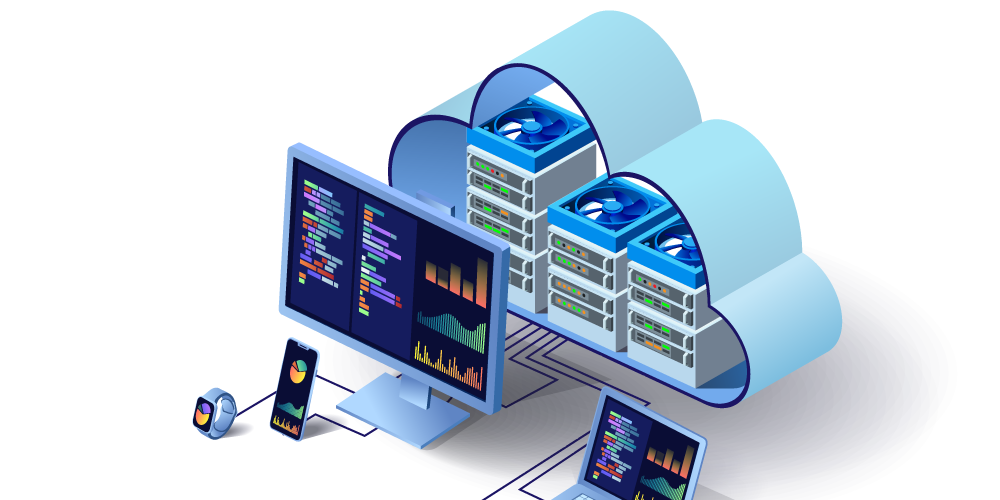
Mar 15, 2024 | SMB Technology, SMB Technology, SMB Technology, SMB Technology, Technology News
Cloud Computing is a commonly-used term, but the concept has been in the works for decades. In recent decades, cloud has come into its own as a powerful mode of computing used for businesses large, medium and small. Read on to learn about current and future trends in cloud computing. A Brief History of the Cloud CompTIA gives a brief history of the development of the cloud in an article about cloud trends. The first vision of the cloud, in the 1960s, was put forth by MIT Professor John McCarthy. Cloud computing would offer computing as a public utility, each subscriber paying only for what they use. In the next ten years, machines were linked to a host machine. Internet protocol had proved itself late in the 1970s, and by the 1980s, many more computers were connected to the Internet. By the 1990s, mobile devices became part of the landscape, and were able to access the Internet remotely. The code that helped Amazon to provide its online marketplace led to developing the model cloud. Cloud continued progressing to the point of “powering business operations in some form for nearly every organization.” The Present State of Cloud Computing Cloud computing is currently experiencing widespread demand, and focusing on efficiency. Edge computing, which may have a major role in the future, is currently decreasing latency (the time it takes for data to travel from its point of energy to its destination, and back again). Organizations can expand their capabilities and retain functionality across locations; this could be vital for Unified Communications. The “anything as a service” (XaaS)...

Feb 14, 2022 | SMB Technology, SMB Technology, SMB Technology, SMB Technology, Technology News
Cloud computing, with its many benefits and options, is here to stay. Its popularity continues to grow each year. Read on to learn how cloud offerings will benefit your company, and how to know which offerings to choose. Trends in Cloud Computing Cloud computing, and the spending on it, continues to grow. An article from CompTIA predicted that spending on Software as a Service (SaaS) will reach more than $145 billion in 2022. Interestingly, many businesses show an appetite for public cloud computing. Benefits of cloud computing in general, are the ability to access computing resources over the Internet; infrastructure management by the cloud service provider (CSP) removing the necessity for on-premise infrastructure; the ability to scale resources for varying demand; and the ability to manage costs using a subscription model. Public cloud computing offers these benefits, along with numerous data centers. If one center goes offline, another will pick up the traffic. The rise in demand for public cloud services also offers opportunities for managed service providers to transition to provide more of those services; with this opportunity for growth will come the need for retraining of staff to provide such services. Considerations in Choosing a Cloud Deployment With its benefits, deployment options, and delivery models, cloud computing requires considerations before adoption. When choosing a deployment option, consider your company’s needs before choosing. Public cloud is shared by multiple tenants, and careful attention needs to be paid to security. Since public cloud is expected to be popular, according to CompTIA, security will need to be a key consideration. Additionally, trends predict a change in...

Jan 13, 2021 | SMB Technology, SMB Technology, SMB Technology, SMB Technology, Technology News
Cloud computing, with its benefits, considerations and even risks, can be a way to transform your business. When considering your cloud strategy, it must aid and advance your business strategy with its mission, values and goals. Read on to learn more about developing a cloud strategy tailored to your business strategy. Business Strategy Determines Cloud Strategy Now might be a good time to closely review your business strategy, and what you hope to accomplish in the coming year. Do you plan to have workers continue remote work, for example? Then you might need to extend access to more people, which brings up bandwidth and security concerns. According to an article from Gartner, your cloud strategy “needs to align with and actively support [your] organization’s business strategy, regardless of whether your organization provides consumer services, business services, or other products.” Broad categories of considerations include: Risks associated with cloud computing–agility, availability, supply chain, security and compliance. Also, having a clear exit strategy (or even more than one) before committing to any project, can help you reach balanced cloud deployment strategies. Some risks may pertain more to certain industries (security risks may be the most important consideration for healthcare organizations in protecting patient data, for example). Route and approach to the cloud. Will your business opt for moving all applications to the cloud, or rehosting some and completely rebuilding others? And what sort of platform is the best fit, whether Software as a Service (SaaS) for rapid access or adoption of cloud infrastructure for building new functions? What will your business do about migrating current and legacy applications? ...

Aug 10, 2020 | SMB Technology, SMB Technology, SMB Technology, SMB Technology, Technology News
While many businesses have already adopted cloud computing to a certain extent, others are still new to the technology. Whether your business is using cloud computing already, or is considering a move, it’s never too soon to develop a strong strategy. Read on to learn more about developing a strategy to guide your business in considering cloud computing. Strategy, Then Implementation A key feature of a cloud strategy is that it addresses why a company might move some or all of its operations to the cloud. According to a report by Gartner, “a cloud strategy explores and defines the role that cloud computing should play in an organization.” Formulating a strategy is a task of the entire organization, not simply the IT department. Departments such as human resources, legal and finance can provide valuable input, since they will use the computing resources that the cloud can provide. A company that has already moved some of its data and applications to the cloud can also develop a strategy moving forward. It’s easy to assume that if a business has moved to the cloud, it’s too late to develop a strategy. Quite the contrary, a strategy can help refine a company’s motivation for adopting cloud technology, based on lessons already learned. Strategists can examine how the cloud has benefited the business so far, meeting its needs (conforming to data regulations, for instance). Along with accomplishments, it gives a business the opportunity to correct any mistakes going forward. Once a strategy has been formulated, then implementation (including choosing a provider and a cloud environment) can begin. Contingency Plans as Part of Your...

Jul 13, 2020 | SMB Technology, SMB Technology, SMB Technology, SMB Technology, Technology News
Cloud computing is now a common way for small to medium-size businesses to provision computing resources for flexible, cost-effective results. Read on to learn about how one cloud model–Infrastructure as a Service or IaaS–can help your business manage spend and maximize results. IaaS Provides Flexibility According to Gartner, Infrastructure as a Service (IaaS) is a standardized, highly automated offering, wherein computing resources, complemented by storage and networking capabilities are owned by a service provider and offered to the customer on demand. With the infrastructure owned and managed by the cloud service provider, the business using the resources no longer needs to maintain infrastructure on-premises. The business can let the provider do the work of maintenance and updating, which converts a capital expense to an operating expense paid on a monthly or annual basis. In an IaaS model, a company can purchase extra resources for experimental technical initiatives, then scale back when needed. On-site infrastructure is available, to which new applications can be added. What to Consider Before Adopting IaaS Infrastructure as a Service, with its many benefits, still needs to be evaluated according to business needs. Some companies such as health care organizations are subject to compliance with HIPAA and HITrust, and will need a private cloud environment. Encryption of health-care data is vital, when it is in motion (as in the case of a telehealth appointment) or at rest. IaaS offers the most control for health-care organizations, including the ability for IT admins to modify how data is handled and stored. While some organizations might need to spend more for this level of security, maintaining security and compliance...






